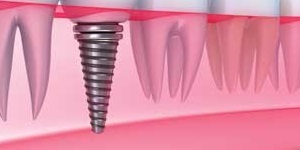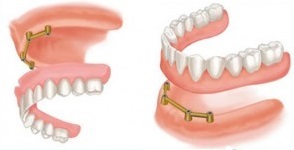
قطرهای مختلف ایمپلنت دندان در استخوان قدامی (جلو)
2015-10-04
همه ویتامین های مورد نیاز کودکان
2015-10-05Edentulism is an important issue and will remain so due to high numbers of edentate individuals worldwide. For many years, complete dentures have been the only treatment option for this population. Implant overdentures have been shown to have many advantages over conventional complete dentures. However, although dissatisfied with their mandibular dentures, some edentate elders are reluctant to undergo even simple implant treatment due to factors such as cost and fear of surgery. To address these obstacles, this paper reports on a review of small-diameter implant (SDI) studies that were performed in the last two decades. The aim of this study is to (i) determine the survival of narrow diameter implants, (ii) determine whether survival is dependent on whether these implants are placed using a flap or flapless approach, and (ii) determine whether there is a relationship between length and implant survival in SDIs
METHODS
In this review, studies were included that (i) involve implants with 3.5 mm diameter or less, (ii) have a randomized clinical trial, retrospective or prospective cohort design with human subjects, (iii) provide a follow up duration of at least 5 months following implant placement, (iv) include data on the survival rate of the implants
RESULTS
Forty one studies meeting the above criteria were published between 1993 and 2011 using SDIs from a variety of companies and surface characteristics with diameters of 1.8 mm to 3.5 mm and lengths of 8 mm to 18 mm. A total of 10,093 SDIs were inserted in approximately 2762 patients. Twenty-six studies involved flap reflection techniques for implant placement, six studies used a flapless technique and two studies used both techniques; in the remaining studies, the technique was not specified. Follow up duration varied from 5 months to over 9 years. The survival rate reported in all screened studies was over 90%, including eight studies in which a 100% survival rate was reported. In 22 studies, the reported survival rate ranged from 95% to 99.9%. Failure was reported most often in short SDIs (less than or equal 13 mm) (n = 88) compared to longer ones
CONCLUSION
Survival rates reported for SDI are similar to those reported for standard width implants. These survival rates did not appear to differ between studies that used flapless and flap reflection techniques. The failure rate appeared to be higher in shorter SDIs than in longer ones in the studies in which the length of the failed implants was reported. SDIs could be considered for use with fixed restorations and mandibular overdentures, since their success rate appears to be comparable to that of regular diameter implants. They might also be an efficient, low-cost solution for elders who wish to reduce problems with denture instability






